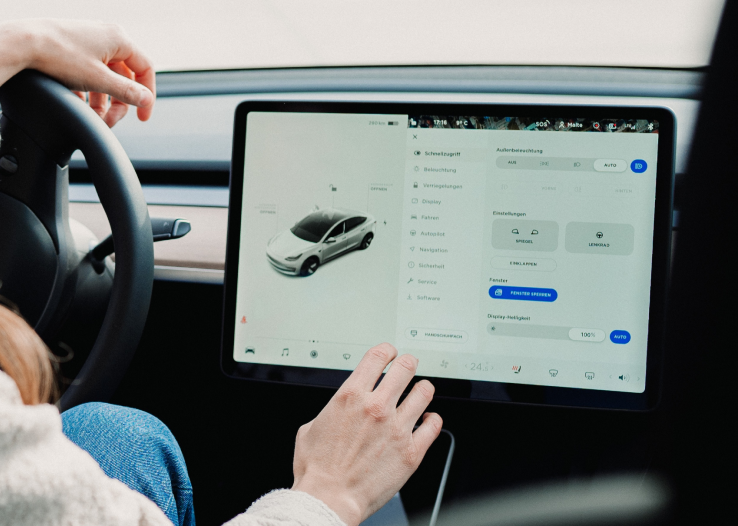These days the automotive supply chain is being stress-tested like never before. Geopolitical tensions are redrawing trade maps, EV platforms are changing product cycles and the shift toward software-defined vehicles is reshaping what it means to be a car. Add in stricter ESG requirements, regional sourcing mandates and volatile demand patterns, and automotive supply chain management has never been tricker.
It’s not all doom and gloom though. Amid this turbulence, a new toolkit is emerging. One that doesn’t just patch up old processes but fundamentally redefines them. Artificial intelligence, and especially large language models (LLMs), are enabling OEMs to shift from reactive supply chain management to proactive, predictive and automated operations.
The question is no longer whether AI will transform automotive supply chains. It’s how quickly leaders can identify high-impact use cases, embed them into their day-to-day workflows and turn them into measurable competitive advantage.
This comprehensive guide explores how AI is changing supply chains across the automotive sector, examining artificial intelligence supply chain technology implementations and AI supply chain optimization strategies that leading manufacturers are deploying today.
How AI is changing supply chain management
For decades, procurement and inbound logistics have relied on ERP systems that excel at record-keeping but fall short in automation and contextual decision-making. The result: slow request for quotation (RFQ) cycles, fragmented supplier communication, blind spots in fleet management and a limited flexibility to pivot when market conditions change overnight.
AI changes that equation by processing massive volumes of data from across the supply chain — think supplier bids, AI-driven supply chain planning and forecasting, shipping updates, risk alerts, etc — and turning them into actionable insights in real time.
McKinsey estimates that AI supply chain optimization in the automotive industry can reduce logistics costs by up to 15%, lower inventory levels by 35% and improve service levels by 65%. In the automotive sector, where margins are tight and penalties for late delivery are steep, those improvements can literally make or break a program launch.
And here’s the thing — your competitors aren’t waiting. Toyota has already leveraged LLM-powered delivery optimization to cut lead times by 17%, while Honda’s AI-enabled inventory forecasting reduced excess stock by 22%, freeing up millions in working capital.
These aren’t pilots or water cooler conversations that never transpire — they’re production systems already delivering tangible ROI.
Where AI fits in the supply chain
Automotive supply chain management is a complex choreography involving multiple steps, each with its own challenges and AI opportunities. Visualizing this as an end-to-end flow helps identify where the biggest gains can be unlocked.
It begins with supplier discovery and onboarding, moves through RFQ and contract management, and continues into inbound logistics, including transport scheduling, customs clearance and plant delivery. AI can add value at each stage.
- In supplier onboarding, generative AI agents auto-validate supplier credentials, compliance documents and ESG reports against multiple data sources saving ample time in the process
- During RFQs, natural language processing parses lengthy supplier proposals, extracts comparable metrics and can flag up anomalies
- Once sourcing decisions are made, AI-driven predictive models can schedule shipments for optimal cost and lead time (while factoring in disruptions like port congestion or adverse weather conditions)
Even the last mile of inbound delivery can be optimized through AI-powered routing, which allows plants to maintain just-in-time schedules without costly buffers.
Imagine an AI dashboard that doesn’t just tell you where a shipment is but tells you what’s likely to delay it until next week and then suggests proactive re-routing before it becomes a problem. The hassle that would save, let alone the money it would save.
Examples of AI in automotive supply chain management
Our recent outlook on the state of the global automotive industry revealed, amongst many things, that Japanese, American, German and Chinese OEMs are leading the way when it comes to automotive innovation — including AI.
Picture these as a carousel of real-world examples, each showing a challenge, the AI-enabled solution and the resulting value.
1. Toyota’s AI supply chain
Japanese automotive giant Toyota are already using AI in their supply chain management in multiple different ways, each driving tangible results for the brand.
a) AI factory platform
Toyota’s Production Digital Transformation Office launched a factory-level AI platform in late 2024 that empowers floor workers regardless of AI expertise to build and deploy machine learning models for optimizing production workflows, regardless of their own individual AI knowledge.
The result? Up to 10,000 hours of tedious manual work saved each year across its manufacturing network. This isn’t a test drive (intentional pun), it’s a legitimate working efficiency engine and a prime example of how AI is already improving automotive supply chain management.
b) Predictive energy optimization
Utilizing sensors and AI analytics, Toyota’s global production sites have implemented real-time energy monitoring, demand forecasting and automated adjustments (things like lighting, HVAC and equipment scheduling).
These measures have trimmed carbon emissions and reduced energy costs by roughly 20%, which is incredible, but they’ve also extended equipment longevity meaning manufacturing costs are significantly reduced. A huge impact on profit margins.
c) AI agents for engineering knowledge sharing
Toyota introduced around nine specialized AI agents via Microsoft Azure OpenAI in early 2025. Each agent assists engineers by answering questions about design efficiency, regulatory compliance or sourcing options — drawing on Toyota’s internal design archives and veteran documentation.
2. BMW’s supply chain control tower
Heading over to Europe for this example because it’s not just Japan leading the way.
Automotive behemoth BMW employs a generative AI system called Alconic that continuously monitors events, live disruptions and supplier data to proactively anticipate and respond to supply chain issues in real time, drastically improving resilience.
Since rollout, over 1,800 employees have run 10,000+ searches using AIconic. Adoption has been so successful due to BMW has implementing an AI governance framework that mandates training, and AI literacy programs for staff.
3. Tesla’s AI for forecasting critical materials
Tesla like to think itself as a pioneer in the automotive industry, so naturally is already in the AI driving seat.
The electric automaker relies on AI to manage volatile supplies (note: lithium). AI provides accurate demand forecasting, smoother order management and reliable inventory oversight which is crucial for certain EV components (note: batteries).
4. Ford’s time-series AI for disruption prediction
When you’re one of the oldest and OG automotive manufacturers going, you know that innovation is how you survive — and thrive. Who knows that better than Ford?
Ford has developed an AI system based on attention-based, sequence-to-sequence deep learning and survival analysis to predict supply chain disruptions across its NV plants. With over half a million time series processed, it has achieved an impressive precision of 0.85 and recall of 0.8 during QA. It’s high-impact disruption forecasting at scale.
Why these examples matter
Each of the above cases is more than visionary or an abstract idea. They're operational, ROI-driven and strategically targeted examples of AI improving automotive supply chain management.
- Toyota’s internal platform demonstrates how AI can free up skilled labor and drive efficiency without overhauling legacy IT, and the brand's AI agents bolster knowledge retention and regulatory agility, which is crucial for procurement and design leaders
- Energy management proves AI can deliver measurable sustainability gains alongside financial savings
- BMW and Tesla show how AI empowers proactive risk mitigation and demand alignment in fast-changing markets
- Ford’s precision in disruption prediction illustrates advanced analytics in action, safeguarding operations at scale
Overcoming the practical challenges
Despite the promise, embedding AI into your automotive supply chain management isn’t hurdle free. Many OEMs are still tied to legacy ERP systems that resist integration, and data quality issues can undermine AI accuracy. There’s also the issue of skills gap. Many procurement and logistics leaders understand the pain points but lack the AI fluency to translate them into technical requirements.
The key here is to avoid the trap of “AI for AI’s sake.”
Success, and by success we mean a tangible improvement on ROI — whether that's reduced risk, increased logistics efficiency or a tangible revenue increase — comes from identifying specific, high-value pain points and addressing them with modular AI applications that integrate into existing workflows without requiring a wholesale IT overhaul.
This approach minimizes risk, accelerates time-to-value, and builds confidence for scaling.
It’s also critical to have AI governance in place, as BMW do. That’s clear rules for data usage, ethical AI considerations and measurable KPIs. Without these, even the most advanced models risk becoming expensive science projects rather than genuine operational assets.
A practical entry point is a discovery and opportunity-mapping phase. This involves bringing together procurement, logistics and IT leaders to map current workflows, identify friction points and estimate the potential value of AI-enabled fixes. From there, a prioritized roadmap can be developed — often starting with one or two “lighthouse” projects designed to deliver quick wins.
For procurement teams, this might mean piloting AI for RFQ automation, supplier risk scoring or predictive cost modeling. For inbound logistics, it could start with AI-assisted shipment consolidation or automated customs documentation.
By starting small and building incrementally, OEMs can sidestep the complexity of a big-bang transformation and instead create a series of interconnected, AI-native processes that together deliver step-change improvements in cost, flexibility and resilience.
The road to AI success
The automotive supply chain is too complex, too fast-moving and too high-stakes to be managed with yesterday’s tools. But AI in supply chain planning represents the next evolution of automotive logistics. AI offers a competitive edge that’s both immediate and scalable — particularly when deployed in focused, workflow-embedded ways
OEMs that embrace this shift now will be positioned to weather tariff disruption, respond to market shifts in real time and deliver products to customers faster and more cost-effectively. Those that delay will fall behind. Not just in efficiency but in relevance too.
Looking to harness the power of AI but unsure where to start? Check out Star Automotive & Mobility to find out how or get in touch directly below to learn more.







